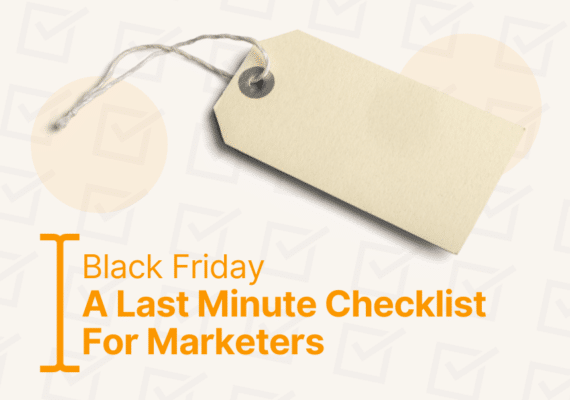The whole world is online right now. And you need to be as well. People are more aware nowadays, we all do our own market research before we go out and buy something. Even when we’re looking for local shops, we search for them online first to get more information. That is exactly why you need a website.
Websites are the face of your brand, and it’s important to have as much information about your brand as possible on your website.
When it comes to growing your brand, eCommerce websites are a great way to reach more people, attract new customers and increase your profits.
The truth is whatever you sell, if you want to be successful you need to sell it online as well as in-store. People don’t just #shoplocal anymore. And you need an eCommerce website.
I’ve put together this list to share with you the popular eCommerce solutions as well as alternative platforms out there.
I’ll start with the 3 popular eCommerce platforms:
Contents
1.Shopify
Shopify is one of the most popular platforms as it is very easy to use and has a lot of options to personalise. It’s perfect for small business owners really.
Pros:
- It doesn’t require any coding knowledge which is a big plus for most people that just want to be in the eCommerce seen without having to pay for a developer or know how to code.
- Shopify has its own integrated payment solutions, meaning you can start accepting credit card payments straight away. You’ll see that with the other platforms this will usually mean an extra cost if the platform doesn’t have its own integrated payment system.
- Shopify will handle customer service with their live chat.
- They have their own Shopify POS which you can use for your offline sales as well.
Cons:
- Shopify uses their own codes and this makes it harder to customise the theme of your Shopify website, unless you know how to code in this format or work with someone who knows.
- Shopify is not the SEO-friendliest solution out there, it relies on separate apps to meet advanced SEO needs. See available apps here.
- With the cheaper plans, the access you get to reports is very limited, and the advanced plans are not exactly cheap.
- You can get your hands on a lot of useful add-ons/plugins, but many of them are not free.
Cost:
- Shopify is not the cheapest option available, but there is a 14-day free trial if you want to go ahead and see what you can create with it and if it’s worth having. Plans start from $9/month. You might be making a lot more money a month than this monthly fee with a Shopify store.
To see Shopify eCommerce in action, check out Gymshark’s website, they’ve built their website using Shopify Scripts.
2.WooCommerce
WooCommerce is definitely one of the most popular ones out there. 11% of the top 10,000 eCommerce websites are using WooCommerce as their online store platform. The fact that it’s free and is built on WordPress obviously plays a huge role in these stats.
Pros:
- WordPress is used by many companies and because WooCommerce is built on WordPress, you get access to various plugins which makes it easier for you to customise your eCommerce store.
- It’s pretty secure, it is regularly updated to remove bugs and issues.
- You can create a unique look for your online store with the existing WooCommerce themes and make changes to these themes according to your needs.
Cons:
- WooCommerce is not like Shopify: Setting up an eCommerce website requires more technical knowledge and you won’t get customer support like you get with Shopify.
- It might be beneficial for more small scale businesses but could be a little bit frustrating for large scale businesses.
Cost:
- It’s free! But you’ll still need to pay for WooCommerce hosting and as there is no integrated payment option in place, you have to pay and use a 3rd party gateway.
To see an example: Check out Adventure Parc Snowdonia‘s website.
3.Magento
Magento is a system that’s owned by eBay and is one of the most popular and powerful eCommerce platforms. This one might not be one for the SMEs, as it’s not the easiest to set up nor is it the cheapest option available.
Pros:
- They offer full enterprise level eCommerce solutions.
- There are 2 products they offer: Magento Open Source, which is a free eCommerce platform which provides small businesses with a flexible solution to sell online, and Magento Commerce, which is mostly aimed at larger organisations with wider global presence and higher customer traffic. Magento Commerce can be hosted either on premises or on cloud.
- Magento Solution Partner Programme helps solve issues, which is handy for an advanced level solution like Magento.
Cons:
- Due to its flexible architecture, Magento has a slow loading time, which makes it really time-consuming to set it up.
- The same as WooCommerce you have to pay for a 3rd party payment gateway.
Cost:
- Their most expensive plan goes up to $3,417/month.
Nestle Nespresso is one of the biggest brands that use Magento Ecommerce:
As for the alternative 3rd party eCommerce platforms for companies that don’t want to build their own eCommerce websites. There are eCommerce giants like Amazon and eBay where you can sell your products and services, as well as OnBuy.
Let’s also have a look at the pros and cons of selling on 3rd party platforms:
Pros:
- You can reach millions of people, and get new customers through these platforms, because of the high traffic they get.
- People trust these brands, meaning they will trust your listings on these platforms.
Cons:
- The competition is extreme and this will require you to spend more money on these platforms, to get your products in front of the right people. So it doesn’t stop with the marketplace fees.
- These are rented places and you won’t have full control over your online store as you would with your own eCommerce website.
Amazon:
- Selling on Amazon is relatively easy and you can reach millions of people who are searching for your products.
- There are two selling plans on Amazon:
- Professional plan: £25 monthly subscription fee + additional selling fees when you sell items
- Individual plan: No monthly fee but a fee of £0.75 per item sold
- The professional selling plan lets you add large batches of items to Amazon Marketplace, and there are several options for managing orders, which will be really handy for the companies selling large amounts of products.
- Shipping is usually one of the main topics people have questions about when it comes to selling on Amazon. You can let Amazon handle shipping for you, or you can choose to deal with it yourself.
- Payments will be deposited into your accounts in regular intervals, so you’ll know when to expect the money in your account.
eBay:
- eBay has over 18 million UK buyers, which is a huge number of people to reach to!
- Their mobile application allows you to list items and track sales.
- They have a seller protection plan, which will make things easier for sellers when there is a case of dispute or poor feedback.
- eBay tools to help manage orders are easy to use.
- Fees for selling on eBay can be found here.
Bonus: With the Shopify eBay integration lets you list and sell your products on Ebay without even leaving the Shopify website.
OnBuy:
- OnBuy is a platform that aims to promote sellers based in Europe.
- More than 8 million buyers are on OnBuy.
- There are 2 account packages:
- Standard: £19 per month, with this plan OnBuy gives a £500 sales guarantee, and any month you make under £500 in sales, they will waive the next month’s subscription fee.
- Partner: £39 per month
- With OnBuy you can benefit from their additional marketing services as well.
- They don’t have their own product range, therefore less competition while you’re selling on OnBuy.
Now that you have a bit more information on eCommerce options available, why not try to combine 2 of these? You could have an eCommerce website but still, sell on Amazon on the side. Diversifying where you sell online can help you reach new audiences, increase your brand awareness and finally sell more!
Well, what are you waiting for, go make a start on your online presence now.






